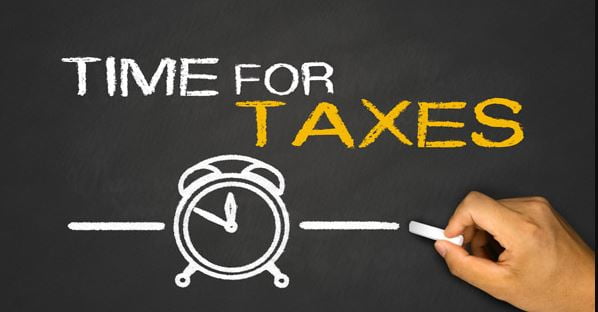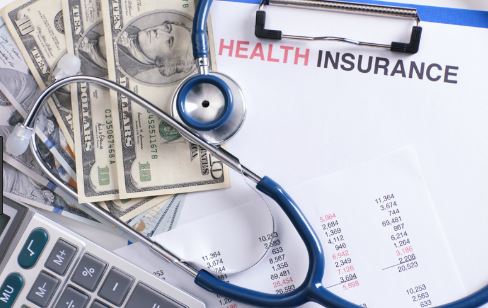When April 15th comes you have to file a tax return and pay taxes. But why do we pay taxes? Is it because you’re “supposed to,” or because most everyone else does? Is it because of tradition, or social convention? Do you pay taxes out of patriotic duty, or even as a practical matter, knowing the government has to have money to function? Or do you file a tax return because of the IRS, for fear of the consequences of what they might do if you don’t? While some, none, or all of these reasons may come into play for you, what I want to focus on is helping you to understand the legal basis upon which the government of the United States (through the IRS) compels Americans to file Federal income tax returns and pay taxes.
How the Internal Revenue Code became the law of the land
Prior to 1776, the King of England was the supreme sovereign authority over the 13 Colonies. This included authority in matters of taxation. So if the king said there was a tax on tea (or whatever), there was a tax on tea.
In 1776 representatives of the 13 Colonies signed the Declaration of Independence, setting forth the rational, legal, and moral basis for America to sever the ties of British authority, including the right of the British to tax the American colonies. The 13 Colonies fought and won the Revolutionary War in order to preserve that newfound freedom and independence.
Recognizing the need for a governing body “to promote the general Welfare,” in 1789 the 13 Colonies ratified the United States Constitution “in Order to form a more perfect Union.” At that time, the Constitution became the supreme law of the land.[1]
As prescribed by the Constitution, Congress became the lawmaking branch of the United States government. In accordance with this authority, Congress has the power to pass legislation which, when signed by the President (and not overturned by the Supreme Court), becomes the law of the land.
Over time the laws of the United States have been organized into what is known as the U.S. Code. The U.S. Code is further organized into Titles covering specific areas of law.
In 1913 the 16th Amendment of the United States Constitution was ratified. It states, “The Congress shall have power to lay and collect taxes on incomes, from whatever source derived… (italics added).”
In accordance with the authority granted to it by the Constitution, Congress created Title 26 of the U.S. Code, which is also known as the Internal Revenue Code. The Internal Revenue Code contains the tax laws of the United States.
The Internal Revenue Code requires U.S. citizens and residents to pay taxes
Now that it’s been established that the Internal Revenue Code (or “IRC”) is the law of the land, where does it say in the Code that people have to file income tax returns and pay taxes?
Congress didn’t beat around the bush answering that question. At the very beginning of the Code, IRC Section 1 states, “There is hereby imposed on the taxable income of [single and married persons]…a taxdetermined in accordance with the following table[s] (italics added).” Tables are then laid out in the Internal Revenue Code showing the tax you owe on your taxable income based on your filing status (single, married filing joint, head of household, etc.).
If your tax is based on “taxable income,” how is that defined according to the Code? IRC 63 states, “…the term ‘taxable income’ means gross income minus [allowable deductions].”
And what’s “gross income?” You’re going to love this. According to IRC 61, “…gross income means allincome from whatever source derived…” And what exactly does that mean? It means that unless the Internal Revenue Code itself provides an exception, the income of all people everywhere is subject to taxation in the United States, and all people, whether married or single, foreign or domestic, on Earth or living in outer space, owe tax on their “taxable income.”
Wow! Asserting tax jurisdiction over everyone everywhere…that’s bold! But how can that be? Did the United States Congress really throw down the gauntlet and declare tax warfare on the rest of the world and you just missed it? Not quite. Without getting into mind-numbing detail, I’ll just say that according to IRC 871 it turns out that nonresident aliens are only taxable in the U.S. to the extent that they have meaningful business, employment, or investment connections to the United States. While that’s good news for foreigners, the flip side is that all of following categories of people are required to pay taxes on their “taxable income.[2]”
- United States citizens who live anywhere in the world (or anywhere in the known universe for that matter).
- Green card holders (otherwise known as “lawful permanent residents”) who live anywhere in the world.[3]
- Non-U.S. citizens who are “effectively connected” to the United States for tax purposes.
The Internal Revenue Code requires you to file tax returns
Okay, you’ve now come to the realization that you legally have to pay taxes. So how much do you owe? And how do you determine how much tax you owe? You do that by filling out the applicable tax return, which for most individuals is Form 1040, “U.S. Individual Income Tax Return.” [4]
As intimidating and confusing as a 1040 can be, it’s actually far better than the alternative, which would be to read through the Internal Revenue Code and manually determine what you owe in taxes with pen and paper or a spreadsheet. Said another way, Form 1040 is designed to provide you with an organized framework to calculate your income tax obligations in accordance with the laws of the Internal Revenue Code.
But let’s just say for argument’s sake that you don’t feel like filling out a 1040, or any other IRS-published income tax form. Can you just calculate your tax by hand, send a check to the U.S. Treasury and be done with it? The answer is no. IRC Section 6011 states, “…any person made liable for any [income taxes]…shall make a return or statement according to the forms and regulations prescribed by the Secretary [of the Treasury] (italics added).” And what are the prescribed forms? It’s those developed and published by the Internal Revenue Service, the division of the U.S. Treasury charged with administering and enforcing the revenue laws of the United States.
There are no exceptions to paying taxes if you have enough income
After reading all of this you might say, “But wait, you probably didn’t realize there’s an exception to paying Federal taxes for me because I’m…” You’re what? A senior? A child or a student? A descendent of an enslaved, oppressed, or persecuted people? A member of a certain religion? That you’re opposed to the current President or other elected officials? That you’re against some aspect of U.S. foreign policy? Or perhaps you’ve been led to believe that you’re exempt from Federal income taxes based on some kind of intellectual, pseudo-legal, wacko argument that you found on the Internet? Despite all of the myths, misinformation, and clever scams out there, none of these are exceptions to filing income tax returns and paying taxes. In short, all Americans whose income exceeds a certain threshold are subject income taxes…period.
Follow the law…or face the consequences
Here’s what it all boils down to.
- The United States Constitution is the supreme law of the land.
- The Constitution grants Congress the power to tax income.
- The Internal Revenue Code contains the tax laws of the United States.
- According to the law, United States citizens, green card holders, and certain foreigners have to pay taxes on their taxable income.
- Taxes have to be calculated on official government (IRS) forms.
That said, the government realizes that regular people often have a hard time understanding and applying the tax laws, and they will generally work with you if you’re making an honest effort to meet your income tax obligations. But if you try to avoid paying taxes through the use flimsy or impassioned arguments that have no basis in the law, you’re going suffer some serious pain when the IRS brings your fantasy world comes crashing down on you because, like it or not, agree with it or not, or want it or not, the Internal Revenue Code is the law of the land.
[2] A “nonresident alien” is essentially a foreigner who does not reside in the United States. For a more formal definition see IRC 7701(b) and related references.
[3] Why would green card holders be subject to U.S. tax if they don’t even live in the States? It’s because they have the right to live and work in the U.S. anytime they want, and for that privilege the United States requires that they pay taxes.
[4] If you meet the qualifications, you can instead file a Form 1040A or a 1040EZ. In theory your tax will come out just the same as if you had filed a full-blown 1040, but these forms are designed to be shorter and easier to complete.



